Marketing
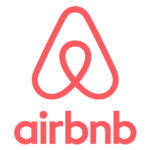
Airbnb brand proposition is rooted in travel, communities, people and experiences and this proposition is placed at the core of Airbnb marketing strategy. Moreover, Airbnb marketing strategy is based on the following three principles: 1. Successful brand partnerships. The travel company has engaged in a number of mutually beneficial partnerships with other brands in order to achieve global brand exposure and create a buzz on the social media. The list of successful Airbnb partnerships include KLM Royal Dutch Airlines, UK bookstore chain Waterstones and even the French government.[1] 2. Celebrity endorsement and social influencers. The peer-to-peer lodging company has been quick to leverage the use of its services by celebrities. The list of celebrities who contributed to spread the word about Airbnb include Mariah Carey, Grande, Lady Gaga, Britney Spears, Channing Tatum and others. The company has been also effective in initiating publicity stands to attract the attention of social media influencers such as journalists, bloggers, YouTubers, podcasters and Instagram stars. For example, Airbnb has sailed a full-size floating size along the Thames River in 2015 to celebrate new rules to support home sharing in London.[2] This particular campaign generated hundreds of press coverage in the UK with positive implications on the level of Airbnb brand awareness. 3. Developing and strengthening the community. From early on, the global hospitality service brokerage company focused on developing its community consisting of both types of customers – hosts, as well as, guests. Airbnb encourages regular communication, detailed profiles and strong reviews in the community. Airbnb Inc. Report contains a full analysis of Airbnb marketing strategy. The report illustrates the application of the major analytical strategic frameworks in business studies such as SWOT, PESTEL, Porter’s Five Forces, Value Chain analysis, Ansoff Matrix and McKinsey 7S Model on Airbnb. Moreover, the report contains analyses of…

Microsoft marketing communication mix explains the patterns of use of elements of marketing communication such as advertising, sales promotion, events and experiences, public relations, direct marketing and personal selling by the multinational technology company. Microsoft Print and Media Advertising Print and media advertising is placed at the core of Microsoft marketing strategy. Microsoft print and media advertising expenses amounted to USD 1.6 billion, USD 1.5 billion, and USD 1.6 billion in fiscal years 2018, 2017, and 2016, respectively[1]. As illustrated in figure below, Microsoft’s print and media advertising campaigns make an appeal to needs, wishes and aspirations of target customer segment and positions Microsoft products and services as efficient tools to be used to satisfy them. Example of Microsoft print advertisement Some of Microsoft’s TV advertisements such as “the apps you want” 30-second commercial that promotes unified Windows Store within Windows Phone and Windows 8 have become viral videos in social networking sites mainly due to engaging presentation of information. Moreover, as an unprecedented move the company has placed a Wi-Fi-Enabled print advertising promotion in a special edition of Forbes magazine targeting a selected group of subscribers. Ultra-thin router and battery placed within pages of magazine granted the possibility of free internet browsing for about 3 hours. Moreover, the global technology company has been gradually shifting its focus from traditional media such to the social media and other online platforms. Microsoft Sales Promotions Sales promotion is used by Microsoft in a frequent manner in both store formats – physical and online. Microsoft sales promotions include the following: 1. Seasonal sales promotions. Microsoft offers 12 Days of Faves promotions, during Christmas and New Year holidays. Additional seasonal sales include Black Friday and Cyber Monday. 2. Discount codes. The company offers special education-designated Microsoft coupons for students, parents, faculty, and…
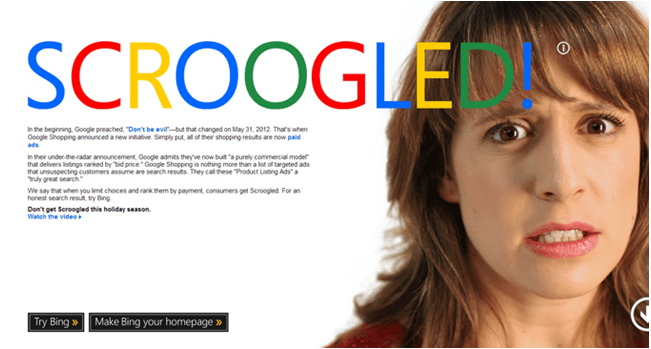
Since the appointment of Satya Nadella as CEO, Microsoft marketing strategy has changed to become less ‘hostile’ abandoning kinds of advertising that ‘attacked’ competitors in a direct manner. For example, a marketing campaign known as ‘Scroogled!’ launched in 2012 informed about Google’s decision to display paid advertisements to search results related to shopping. ‘Scroogled’ was launched to ensure the shift of some Google users to use Microsoft’s Bing search engine, but Nadella stopped this and some other similar campaigns as an attempt to improve the image of the company.[1] ‘Scroogled’ marketing campaign as illustration of old-style Microsoft marketing strategy In other words, since his appointment on the top job, Satya Nadella has been focusing on humanising the brand and taking a customer-centric approach with direct implications on the marketing strategy of Microsoft. Microsoft sales and marketing expenses amounted to USD 17,469 billion, USD 15,461 billion and USD 14,635 billion for the fiscal years of 2018, 2017 and 2016 respectively . In 2018 the tech giant’s sales and marketing expenses increased USD2.0 billion or 13% compared to the previous year.[2] Microsoft marketing strategy is based on the following principles: 1. Investing in the communication of marketing message through various marketing communication channels in an integrated manner. The technology giant uses a range of marketing communication channels such as advertising, sales promotion, events and experiences, public relations, direct marketing and personal selling in an integrated way to communicate its marketing message to its target customer segment. 2. Focus on product element of the marketing mix. Microsoft 7Ps of marketing focuses on the product element of the marketing mix to a greater extent compared to other elements. Accordingly, the multinational technology company has accepted high level of user convenience of its products and services as unique selling proposition associated with the brand. 3.…
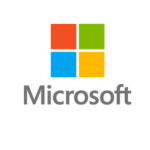
Microsoft marketing mix (Microsoft 7Ps of marketing) comprises elements of the marketing mix that consists of product, place, price, promotion, process, people and physical evidence. The multinational technology company manipulates with elements of the marketing mix according to its marketing strategy, as a part of its business strategy. Product Element in Microsoft Marketing Mix The majority of Microsoft’s products relate to productivity and business processes and to support digital work and life of customers. The company also builds the platforms upon which others build their own digital platforms. Some of Microsoft products are clear leaders in the global marketplace. For example, more than 135 million people use Office 365 commercial every month and Outlook Mobile is installed into more than 100 million iOS and Android devices worldwide.[1] Similarly, Microsoft Teams is used by more than 300 organizations worldwide, including 87 of the Fortune 100 and nowadays there are nearly 700 million devices around the world with active Windows 10.[2] Generally, Microsoft products and services can be divided into three broad categories as illustrated in table below: Category Products and services Productivity and Business Processes Microsoft 365, SharePoint, Skype for Business, Outlook Mobile, One Drive, Dynamics 365, Microsoft Teams, Linked In Intelligent Cloud Server products and cloud services, including SQL Server, Windows Server, Visual Studio, System Center, and related CALs, as well as Azure Enterprise Services, including Premier Support Services and Microsoft Consulting Services More Personal Computing Windows Devices, including Microsoft Surface (“Surface”), phones, and PC accessories. Gaming, including Xbox hardware; Xbox Live, Search advertising. Microsoft product categories and products Place element in Microsoft Marketing Mix Microsoft sells its products and services through the following three channels: 1. Official website: www.microsoftstore.com/store. Microsoft online store is a convenient platform where customers can choose products and services according to categories such as…

Microsoft segmentation, targeting and positioning can be explained as a set of activities that constitute the core of marketing efforts for the multinational technology company. Segmentation involves dividing population into groups on the basis of certain characteristics. Businesses focus on certain customer segments and position their products and services to satisfy needs and wants of these particular segments. Microsoft uses the following types of positioning: a) Multi-segment positioning. The company targets more than one customer segments at the same time with different product and service packages. For example, Dynamics 365, a software for building and supporting customer relationships starts with USD 115/month Customer Engagement Plan for cost-conscious customer segment. Unified Operations Plan starting from USD 190/month, on the other hand is developed for a different customer segment that do not mind to pay extra for additional set of functions and features within Dynamics 365. b) Standby positioning. Standby positioning technique involves the development of products and services that can await changes in the market to find demand in the future. When Microsoft announced its ‘cloud-first, mobile-first’ business strategy in 2014, cloud data storage was a new segment. CEO Satya Nadella saw a potential in cloud business, focused on the development of cloud services using standby positioning technique. The demand for cloud consistently increased and in Q2, 2018 alone, Microsoft commercial cloud revenues reached USD 6.9 billion, a growth of 53% compared to the previous period.[1] The following table illustrates Microsoft segmentation, targeting and positioning: Type of segmentation Segmentation criteria Microsoft target customer segment Geographic Region Global marketplace Density Urban and rural Demographic Age 16 and older Gender Males & Females Life-cycle stage Bachelor Stage young, single people not living at home Newly Married Couples young, no children Full Nest I youngest child under six Full Nest…
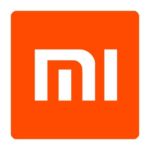
Xiaomi marketing communication mix explains the extent of usage of individual elements of marketing communication channels by the mobile internet company. Generally, elements of the marketing communication mix consist of print and media advertising, sales promotions, events and experiences, public relations, direct marketing and personal selling. Xiaomi Print and Media Advertising “Xiaomi once touted its avoidance of advertising as one of the keys to its early success—saving money on commercials helped keep the overall price of the phones lower. Instead, it relied on its upper executives and its “fans” to spread the word and attract new customers through social media.”[1] However, due to increasing competition from its local rivals Oppo and Vivo, The mobile internet company had no choice but to engage in certain forms of traditional advertising such as posters and newspaper advertising. Nevertheless, viral marketing remains as the most important form of marketing for Xiaomi. The internet technology company also uses celebrity endorsement from the likes of top Hong Kong actor-singer, Tony Leung, a 54-year-old best-known to English-speaking audiences for movies like “In the Mood for Love” and “Lust, Caution.”[2] Xiaomi Sales Promotions Xiaomi uses the following sales promotions techniques: Flash sales. Flash sales refer to sales of products and services online at a heavily discounted price for a short period of time. Xiaomi uses flash sales extensively, especially in India. Customer Loyalty Scheme. Reward Mi is a customer loyalty program that rewards loyal customers with exclusive benefits such as priority passes a.k.a F-codes and discount coupons which can be redeemed on selected products across Mi Store.[3] Seasonal sales promotions. The electronics and software company announces sales promotions on notable occasions as Christmas day and anniversaries of notable days for the company. Point of sale materials. The company uses point of sale materials such as posters and…
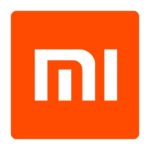
Xiaomi segmentation, targeting and positioning is needed to indentify the target customer segment for the company and to develop products and services that are attractive to this segment. Segmentation involves dividing population into groups according to certain characteristics, whereas targeting implies choosing specific groups identified as a result of segmentation to sell products. Positioning refers to the selection of the marketing mix the most suitable for the target customer segment. Xiaomi uses mono-segment and imitative types of positioning. The internet technology company uses mono-segment positioning, appealing to the needs of a single customer segment. Specifically, Xiaomi targets a customer segment that want to use smartphones and other technology products, but have limited budget to make such a purchase. Xiaomi also uses imitative type of positioning by closely imitating the products of market leaders such as Apple and Samsung. The electronics and software company has even earned the nickname “Apple of the East” due to its close imitation of Apple products and Apple product presentation. The following table illustrates Xiaomi segmentation, targeting and positioning: Type of segmentation Segmentation criteria Xiaomi target customer segment Geographic Region 70 countries and regions globally Density Urban and rural Demographic Age 18 – 65 Gender Males & Females Life-cycle stage Bachelor Stage young, single people not living at home Newly Married Couples young, no children Full Nest I youngest child under six Full Nest II youngest child six or over Full Nest III older married couples with dependent children Empty Nest I older married couples, no children living with them Empty Nest II older married couples, retired, no children living at home Solitary Survivor I in labour force Solitary Survivor II retired Occupation Students, employees, professionals Behavioural Degree of loyalty ‘Hard core loyals’ ‘Soft core loyals’ ‘Switchers’ Benefits sought Cost attractiveness Personality Easygoing, determined and ambitious personality types User status non-users, potential…
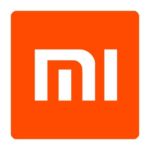
Xiaomi marketing mix (Xiaomi 7Ps of marketing) comprises elements of the marketing mix that consists of product, place, price, promotion, process, people and physical evidence. Product Xiaomi mainly focuses on hardware, software and internet services. The company’s product range is vast and includes laptops, mobile phones, tablets, smart TVs, power banks, smartwatches etc. Xiaomi also manufactures and drones, sells water purifiers, vacuum cleaners and even rice cookers. Xiaomi products such as cellphones, TVs, TV boxes, and speakers have received more than 145 industrial design awards altogether.[1] Continuous expansion of ecosystem of products and services is placed at the core of company’s business strategy. Place Xiaomi is headquartered in Beijing, China and has offices in Asia-Pacific, India, and Brazil. The mobile internet company has established its presence in 70 countries and regions and it is among the top 5 in 16 markets. These markets include Turkey, Malaysia, Mexico, Thailand, Philippines, Russia, Singapore, Indonesia, Brazil, India, and Vietnam. The mobile internet company opened its first offline retail store in February 2016 and by the end of 2017 had more than 155 stores.[2] In March 2017, the company established a new sales channel called Xiaomi kiosks to reach districts without Mi Home Stores and towns and villages with limited e-commerce access[3] Price Xiaomi pricing strategy can be described as economy pricing. Accordingly, the internet technology company sets its prices low, keeping marketing and promotional costs to a minimum. Flash sales are integral component of Xiaomi pricing strategy. The electronics and software company uses the flash sales to announce the sales of its smartphones at a greatly reduced price. Xiaomi flash sales last only for a short duration of time. For example, in India “a flash sale for the Redmi 1S model in September 2014, around 40,000 pieces were sold out in just…
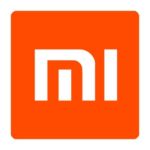
Xiaomi marketing strategy has been traditionally minimalistic due to the cost leadership business strategy pursued by the company. Accordingly, the mobile internet company only engaged in social media marketing, saving on advertising costs and passing this cost advantage to customers in the forms of products with low price tags. However, “Oppo and Vivo have grown in China by using the exact tactics that Xiaomi once avoided. Both companies spend heavily on offline advertisements and celebrity endorsements, plastering billboards on subways and bus stops across China’s second- and third-tier cities.”[1] This has caused a shift in Xiaomi marketing strategy and starting from lately the internet technology company has started to use traditional marketing communications channels as well. Moreover, Xiaomi marketing strategy nowadays also includes product placements and Xiaomi holograms in fiction triller Anon (2018) can be mentioned as an example. As s privately-owned company, Xiaomi does not disclose its annual marketing budget. Xiaomi 7ps of marketing focuses on price element of the marketing mix to a greater extent compared to other elements. Accordingly, the brand’s target customer segment represents price-conscious consumers who want to own the latest smartphones with advanced functions and capabilities for affordable cost. Hunger marketing strategy is one of the integral components of Xiaomi marketing strategy. The electronics and software company appeals to emotional needs of their target customer segment by selling only limited amount of products for a limited duration of time. In other words, the company creates the shortage of supply in purpose, creating a buzz in the market and evoking desire in customers to own a MI brand smartphone. Xiaomi Inc. Report contains a full analysis of Xiaomi marketing strategy. The report illustrates the application of the major analytical strategic frameworks in business studies such as SWOT, PESTEL, Porter’s Five Forces, Value Chain analysis, Ansoff Matrix…
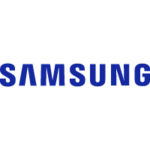
Samsung marketing communication mix utilises a number of marketing communication channels such as print and media advertising, sales promotion, events and experiences and public relations. Samsung Electronics uses these channels in an integrated manner as discussed below in more details. Advertising Print and media advertising is one of the core elements of the marketing mix extensively utilized by Samsung Electronics. One of the important key features of Samsung advertising strategy is that the multinational electronics company usually advertises its specific products such as Galaxy S and Note smartphones, but it does not advertise much Samsung brand in general . The most noteworthy media advertising campaigns include live commercials for Samsung Galaxy S 3 device on popular Jimmy Kimmel Live show in June 2012 and on Late Night With Jimmy Fallon on July and August of the same year. Moreover, partnership with Fox channel in the US to run four 30-second advertising clips during the National Football League, college football and World Series games in 2012 have been praised as efficient marketing campaigns.[1] Samsung print advertising in popular newspapers, magazines and journals have previously included direct attacks on its major competitors, notably Apple. For example, a print ad campaign titled ‘It doesn’t take a genius’ is a clever play of words on Apple’s emphasize on genius branding. The print ad compares major functionalities of iPhone5 and Galaxy S III and illustrating the superiority of Samsung’s product on several fronts.[2] Viral marketing is also extensively used by Samsung as one of the most effective advertising methods. For example, the latest 60-second viral marketing video titled “Anticipation” is a successful attempt to associate Samsung Galaxy S6 with excitement and a sense of achievement and recognition.[3] Sales Promotion Samsung uses sales promotions as a marketing tool more extensively compared to the majority of…
